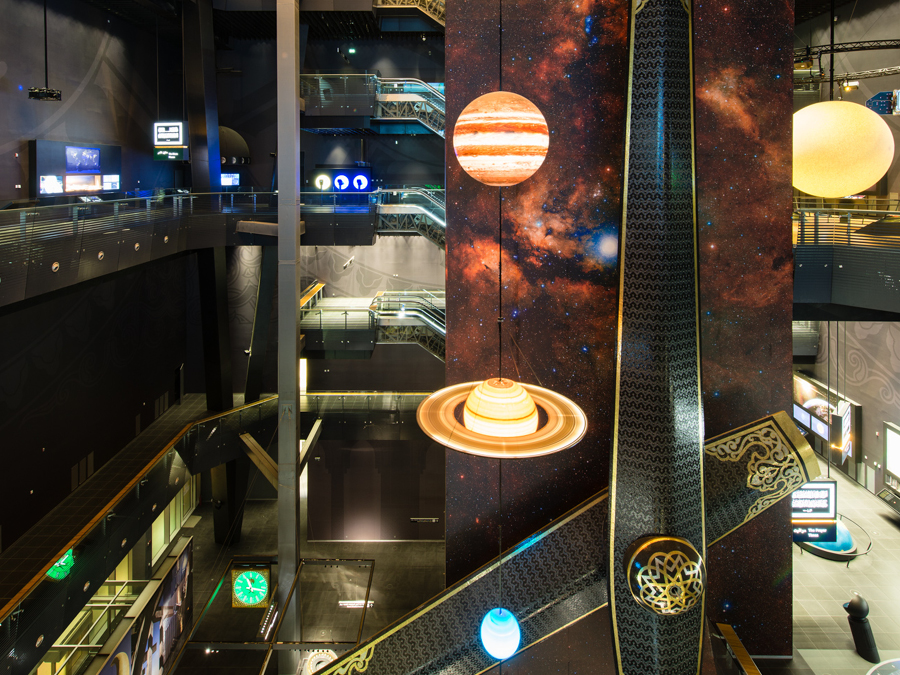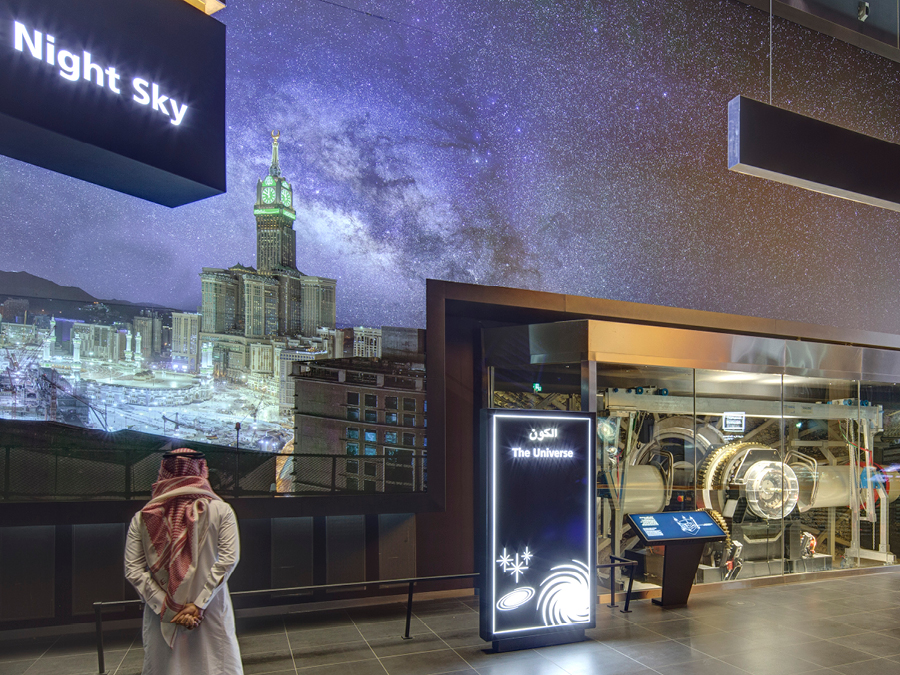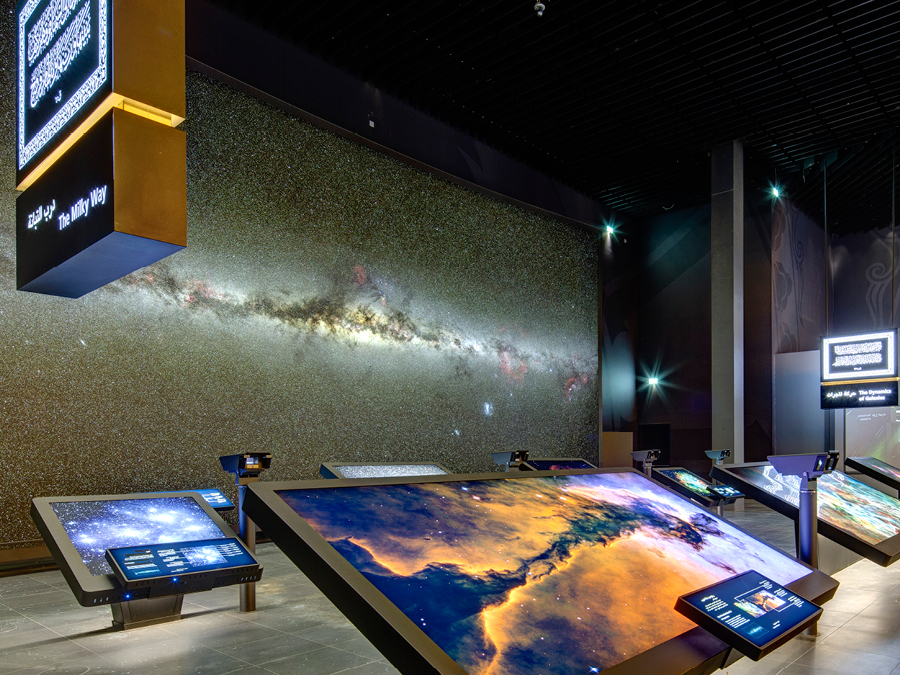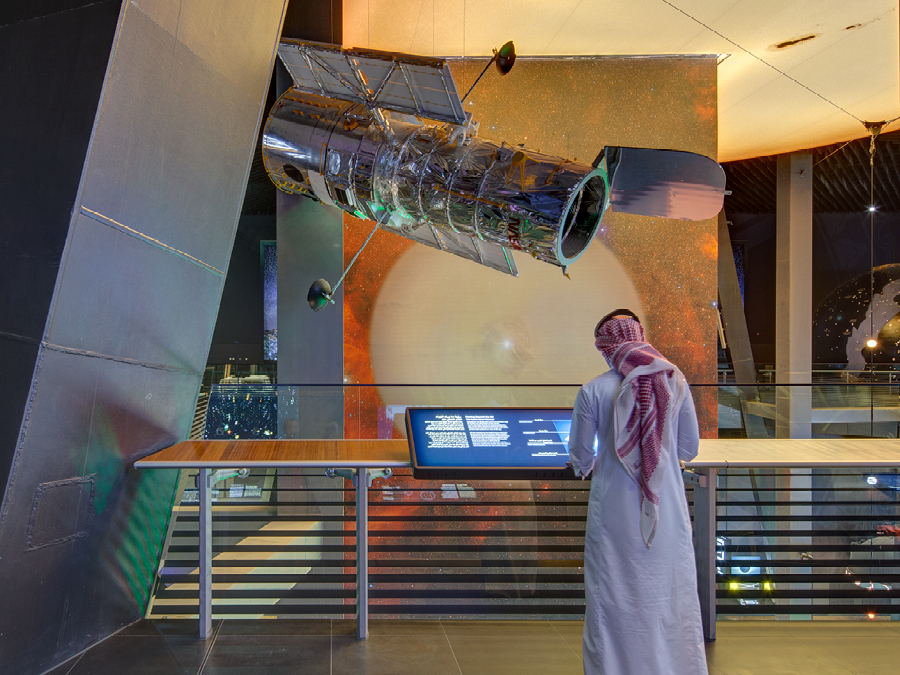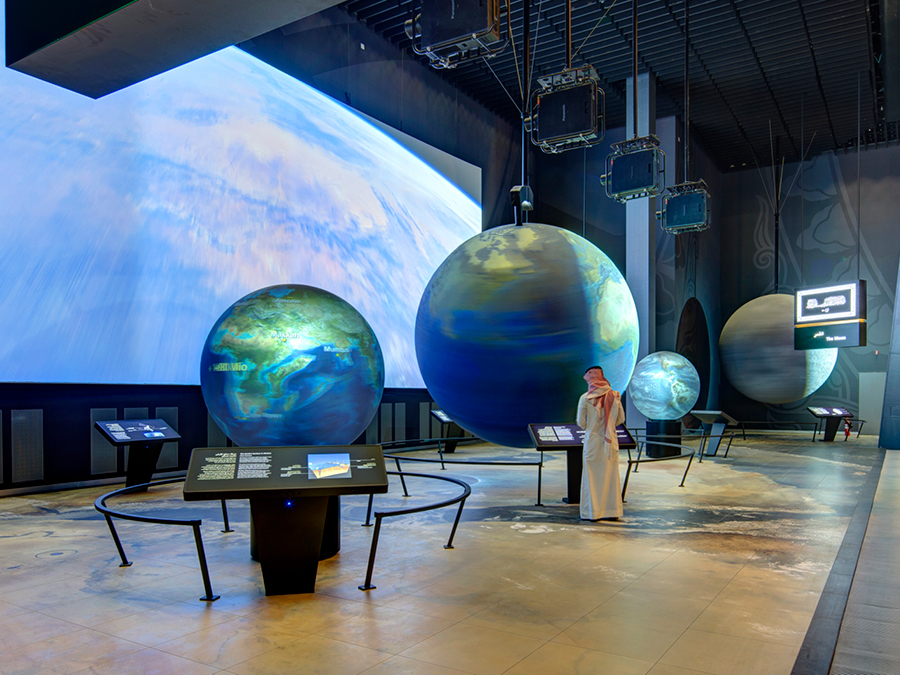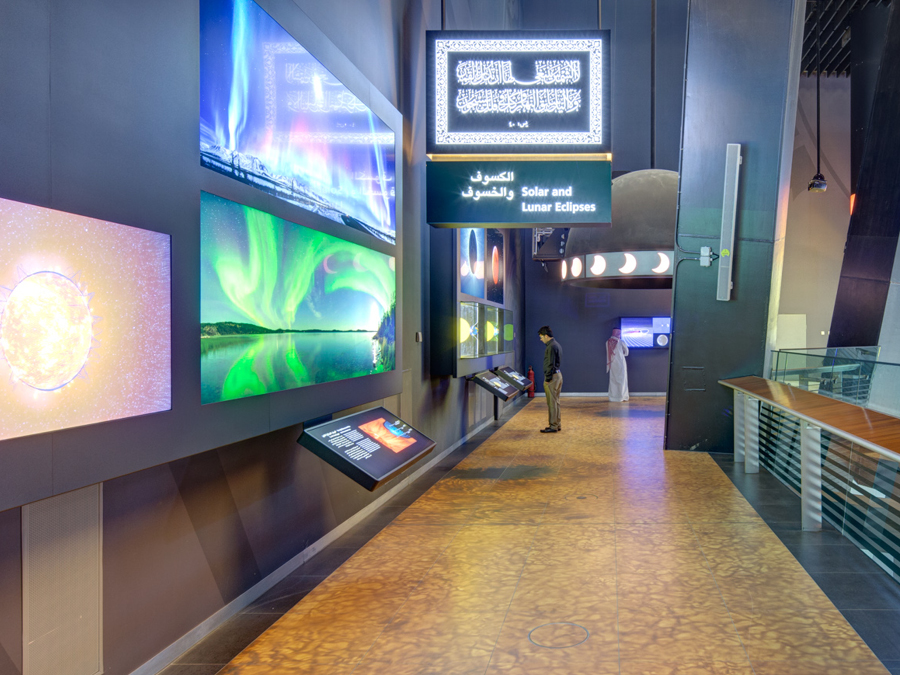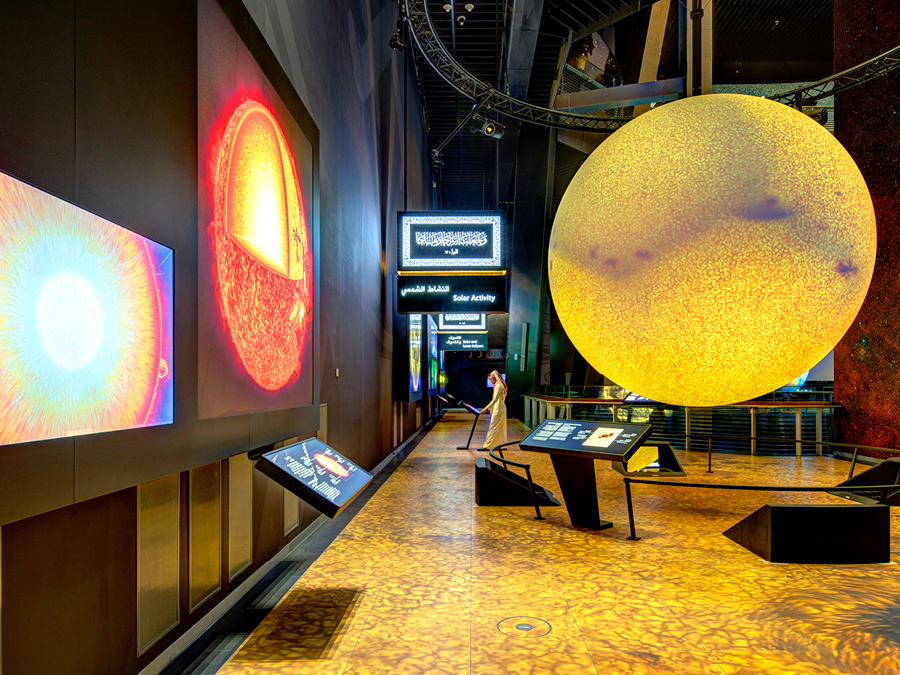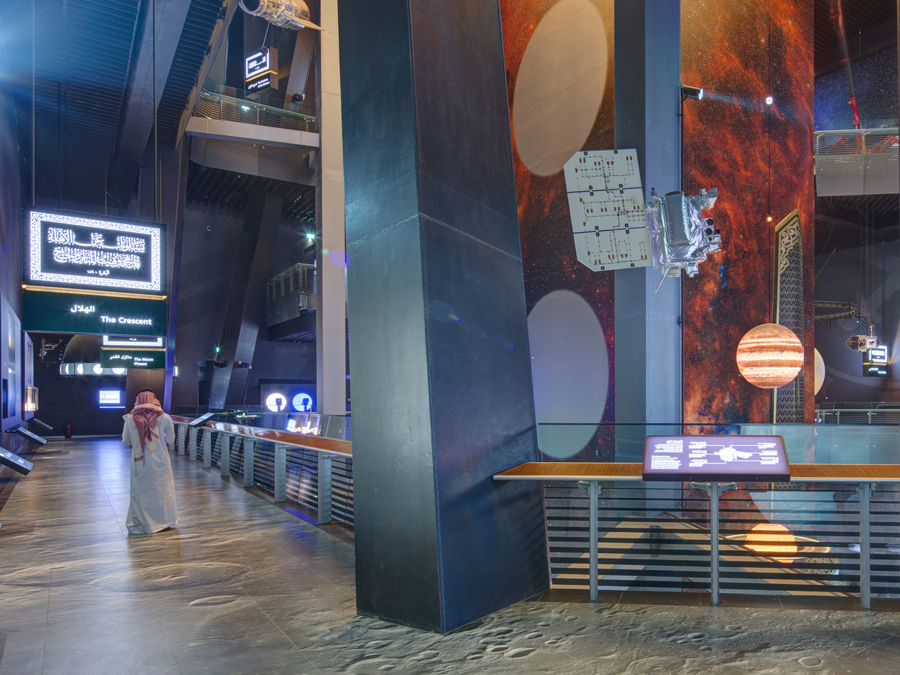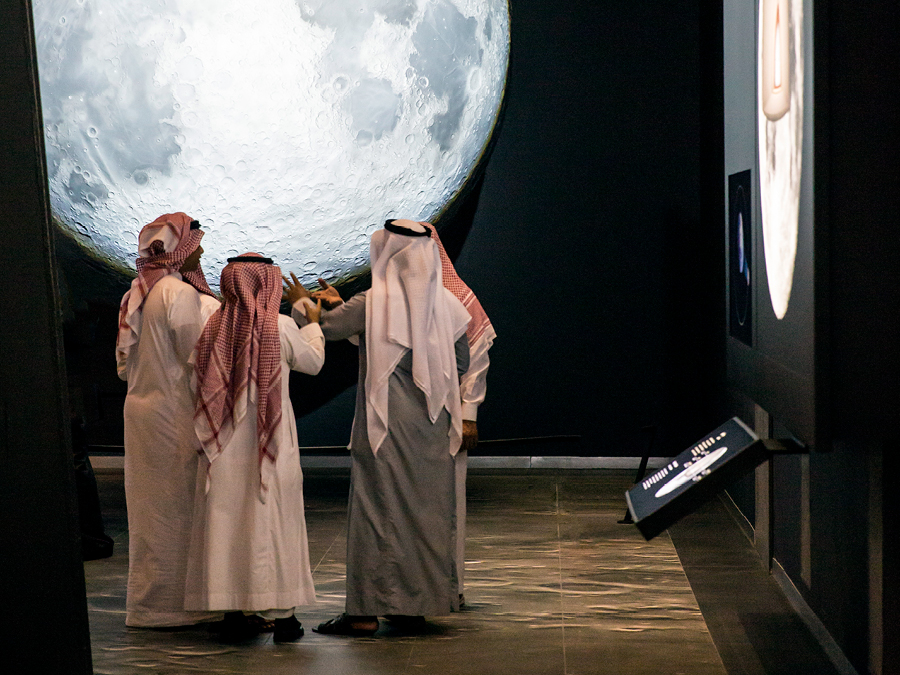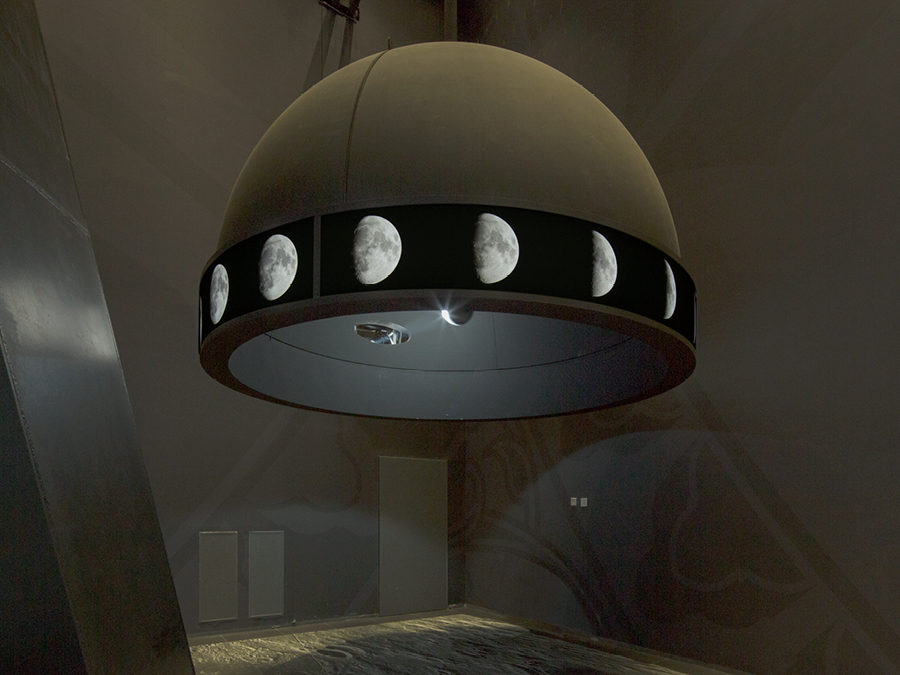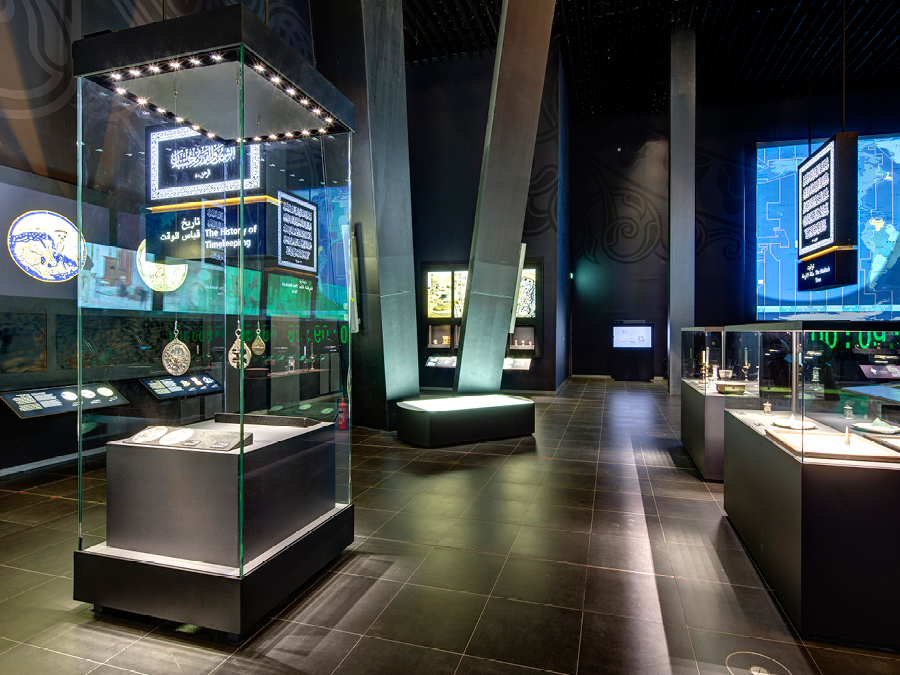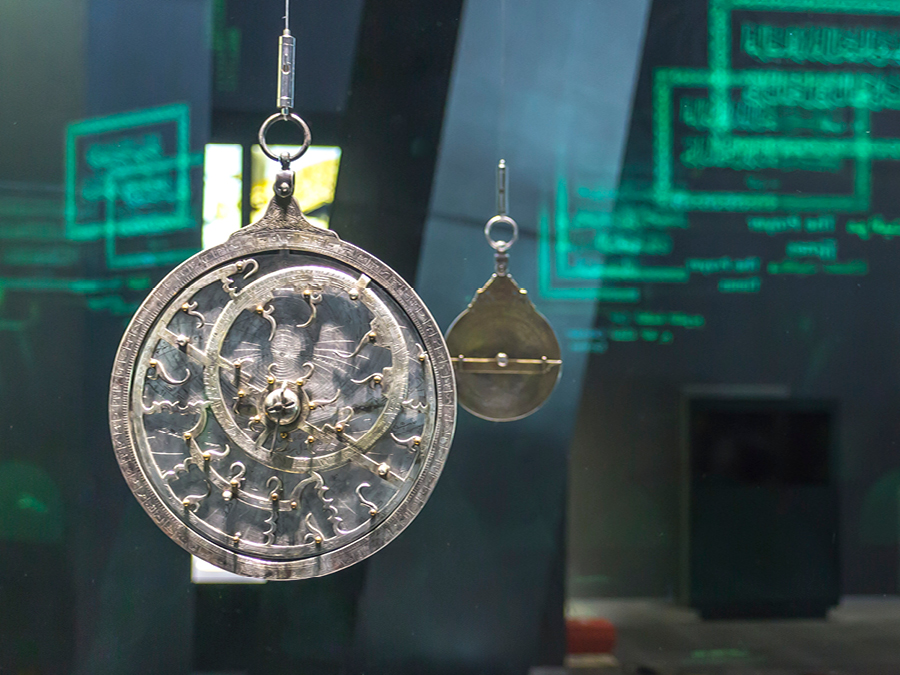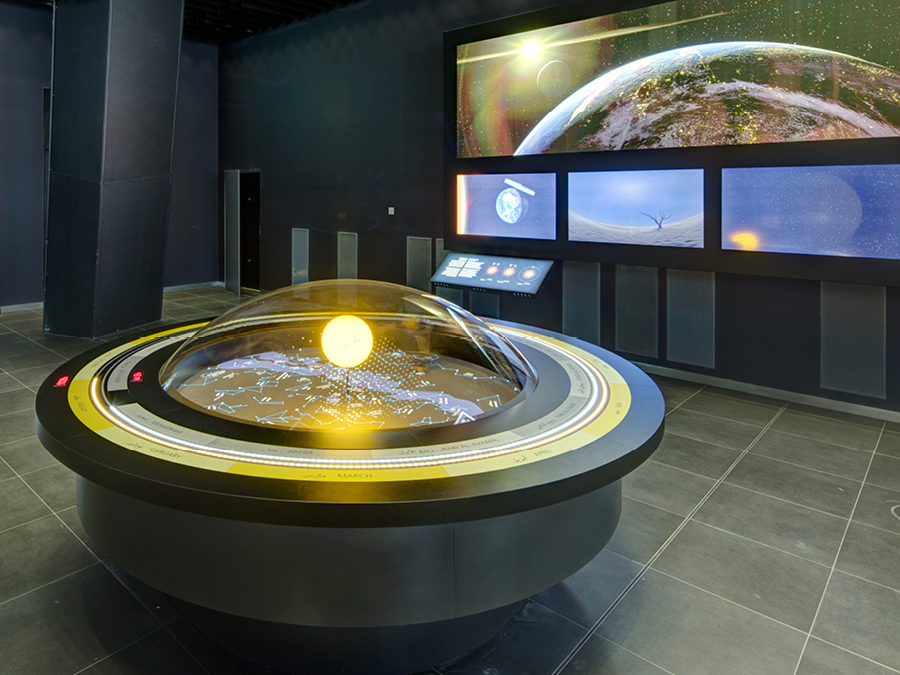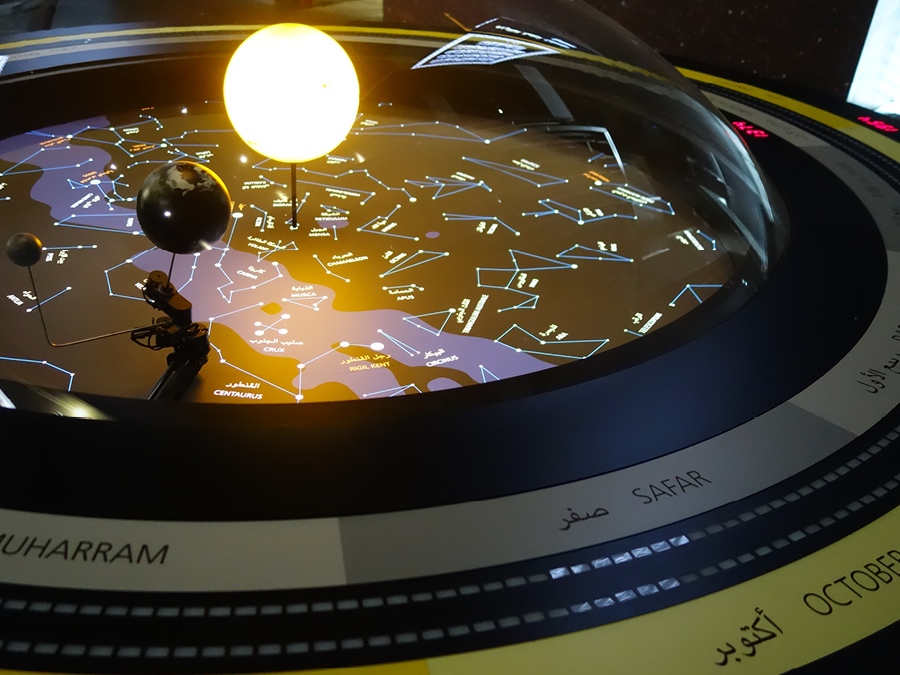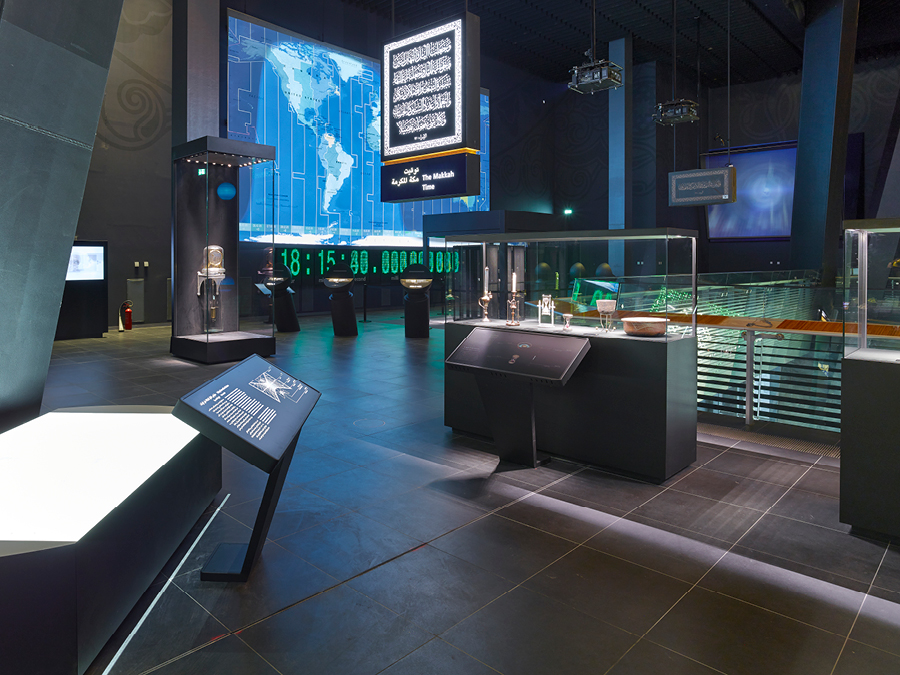The awe and greatness of the Universe is experienced on a spectacular visual journey inside the Makkah Clock Tower. High-speed elevators lift visitors 400 meters, right into the massive space behind the four clock faces. The exhibition spans over three galleries and surrounds a gigantic 50-meter-high void. Each gallery is dedicated to one of the main themes: the Universe – the Sun, Earth and Moon – Timekeeping. Facts based on the latest scientific findings are shown in an innovative way together with relating verses of the holy Quran. In-depth information is provided by an audio guide system in 13 different languages.
The Universe
The exhibition begins with an image everybody is familiar with – the night sky. But the special thing about the night sky over Makkah shown here is that you can hardly ever see it. For the gigantic panorama, the night sky of Makkah was photographed with a special mechanical camera rig and eight synchronously operated high-resolution DSLR cameras.
The Milky Way panorama is the world’s most detailed and biggest panoramic image of our galaxy – the Milky Way. It is assembled from over 37,000 images with an overall resolution of 5 giga pixels. Over the period of one year, the night skies of North America and South Africa were photographed. Afterwards, the resulting photographs were assembled into a monumental panoramic image of our Milky Way.
For the Astronomy Exhibition, the panoramic image was printed on a specially coated polyester fabric. The printing process was optimized to achieve a maximum black density while backlighting the complete surface. The welding process was improved to keep the seams to a minimum, making them invisible even with the use of backlight. For the fabric print – 14 meters in width and 7 meters in height – a construction of light aluminum trusses was custom-built.
1012 dimmable LEDs enable a complete and uniform backlighting of the installation. Over 85 million stars are visible on the display. The final result is breathtaking.
Specially developed media telescopes enable an interactive experience of the Milky Way panorama. Visitors are able to zoom in on different areas and obtain information on stars, constellations and galaxies. Several photographic tables show spectacular Hubble Space Telescope images of astronomical events within the Milky Way, like planetary nebula, exploding stars, and star clusters.
The incredible dimensions of the universe are made tangible on large photographic floors. The Milky Way is shown from above. Visitors thus are able to travel over 150,000 light years, from one end of the galaxy to another, by foot, and see where our solar system is located inside the Milky Way.
The Solar System
The Sun and all eight planets of our solar system as visible from space can be observed in the large void of the Astronomy Exhibition. The installation of planetary models, 33 meters in length, is suspended from the ceiling and beaded like a set of pearls on a necklace.
All planetary models have been scaled in relation to the Sun, which illustrates the unimaginable proportions: the Sun has a diameter of 19 meters, while the Earth is merely the size of a football. Jupiter still reaches a respective size of 2 meters. For Saturn, one and a half meters in size, a ring disc with a diameter of 3.5 meters was built.
The spheres were fabricated from acrylic glass and coated with adhesive slides showing the surface of the respective planets. The images used are based on the best quality photographs taken by different satellites. For a striking demonstration of the planetary surface, the interior of the models is equipped with LEDs.
The 19-meter construction of the sun model was carried out with a lightweight aluminum truss system that is fully accessible for maintenance purpose. The backlit illumination comprises of a specially developed indirect lighting system with 2,100 LED spotlights.
The Sun, Earth and Moon
The immersive solar sphere on display in the Astronomy Exhibition shows the constantly circulating surface of the Sun. The sphere is 3.5 meters in diameter. It is made of highly durable and lightweight carbon fiber material, which allows a suspension from the ceiling, creating the illusion of a floating sphere.
Eight state-of-the-art projectors are installed, including an auto-calibration system. Four of them are mounted on the ceiling with an aluminum truss, four are set into the floor. The projection system is characterized by its high color brilliance and durability. The total resolution reaches 32 megapixels. The swirling granular structure of the Sun’s surface and the periodically occurring solar spots are projected onto the sphere, using high resolution satellite imagery as reference.
Earth – the Blue Planet – is the only planet of our solar system where complex life could evolve, due to large water resources. Constantly evolving, our Earth is no static planet: Over millions of years, the continents evolved, as water and air are in a state of continuous change.
The 3.5-meter globe at the center of the exhibition stands out through its precise relief and richly detailed painting. Reproducing the famous “Blue Marble” image, the painting, like the relief, is entirely based on NASA satellite data. The globe rotates around its axis with the actual Earth inclination of 23.5 degrees. A spotlight simulates sunlight, creating a day and night effect on the globe and a laser projector marks topographical characteristics such as, for example, the Himalaya. The movement of the tectonic plates over millions of years and the global wind and water currents are displayed on two smaller omniglobes.
An 80 sqm large-screen projection shows breathtaking images of planet Earth. They were recorded by the ISS space station, from a perspective only seen by very few people – until now. In an elaborate procedure, the high-definition time-lapse images were assembled into a 4K-resolution film. The photographic floor of the exhibition invites visitors to explore the Arabian Peninsula through a high-resolution satellite image.
The Moon Globe is the world’s largest and most detailed topographic model of the Moon. 3.5 meters in diameter and 39 sqm in surface, it is exactly 1 million times smaller than its cosmic original: one millimeter of the model corresponds to one kilometer of the Moon. A motor makes the model rotate about its own axis. The lighting installed simulates sunlight to make its relief appear the most realistic possible.
The Moon Phase and Eclipse Simulator illustrate the appearance of the Moon phases and which constellations of the Sun, the Earth and the Moon condition the occurrence of lunar and solar eclipses. The simulators consist, respectively, of a 3.8-meter dome, a spotlight, and the models of the celestial bodies.
The lightweight steel construction is supported by shells of extremely light and highly durable glass fiber composite material. A precision-controlled electromechanical drive makes the celestial bodies orbit. A swiveling spotlight simulates the sunlight. While the Moon completes one orbit in 69 seconds, visitors are able to observe the Moon phases and the formation of solar and lunar eclipses.
Timekeeping
Our basic time units – days, months, and years – and their astronomical definition are demonstrated. A 3-meter electromechanical tellurium shows how the Moon orbits Earth, and the Earth-Moon-system orbits the Sun. The solar and lunar calendar in relation to each other and to the orbits of the Earth and the Moon, are demonstrated by LED ring lights.
Furthermore, the exhibition illustrates the development of timekeeping and navigational instruments. The Time exhibition displays original, fully functional instruments. Each and every artifact is a milestone in the history of time keeping, from simple sundials and water clocks to the complex mechanical clocks of the 19th and 20th century. Special exhibits like the Riefler Clock – the most exact mechanical clock ever built – have not only been restored to full condition, but also prepared to allow visitors a look into the mechanical inner workings of the clock.
The final destination of the journey through timekeeping history is the atomic clock system of the Makkah Time Institute, the most exact timekeeping instrument ever built by mankind. Here, visitors have the chance to receive their Makkah Time Stamp with the precision of one nanosecond.


